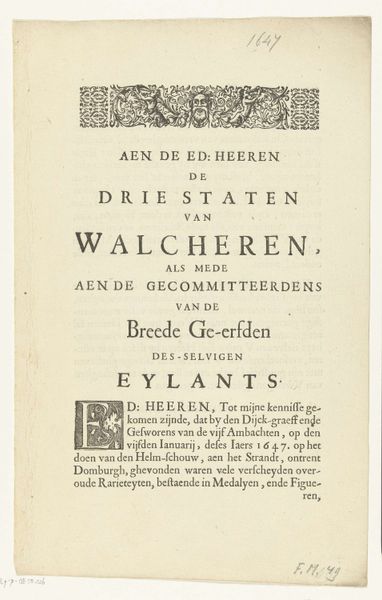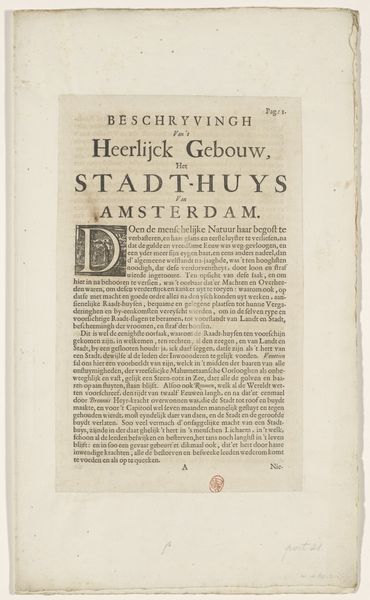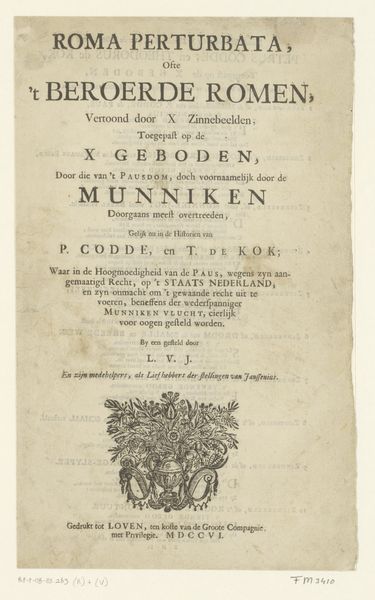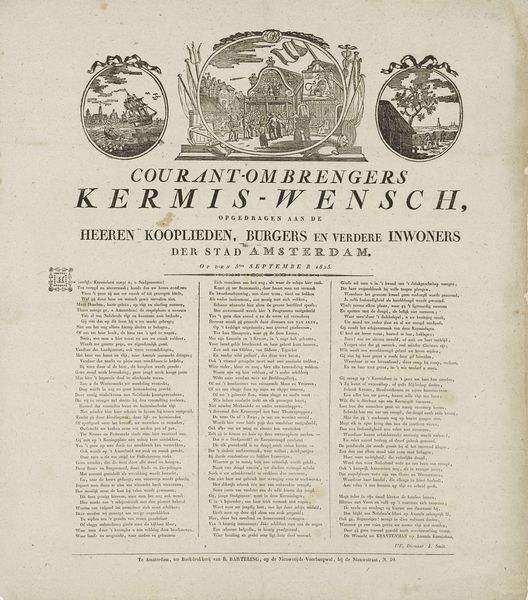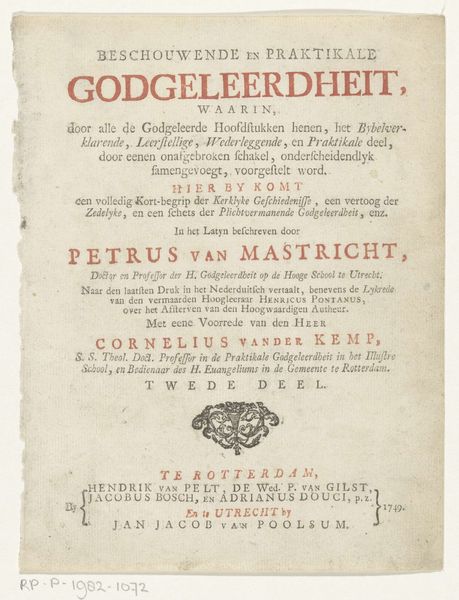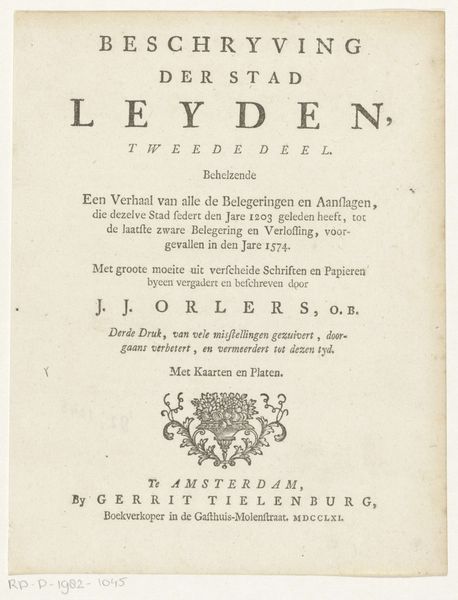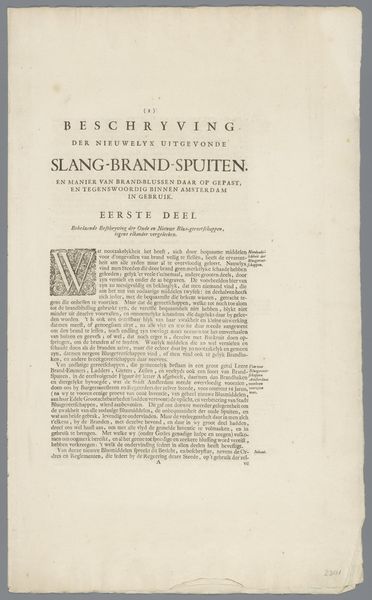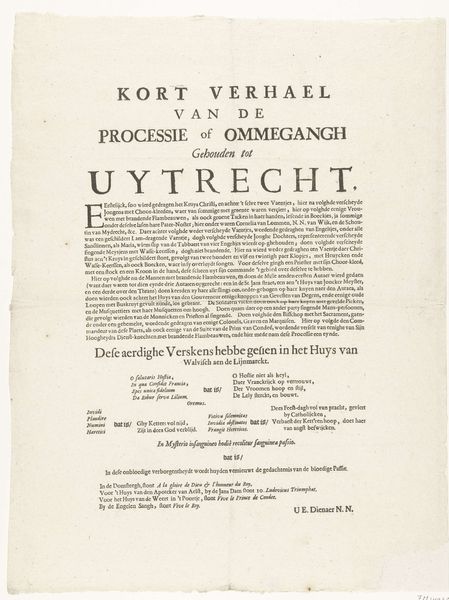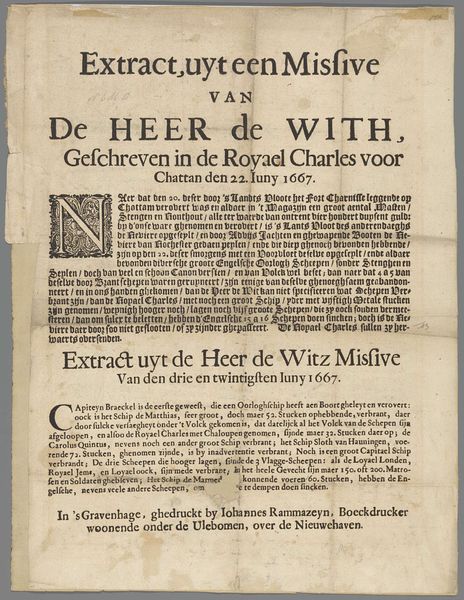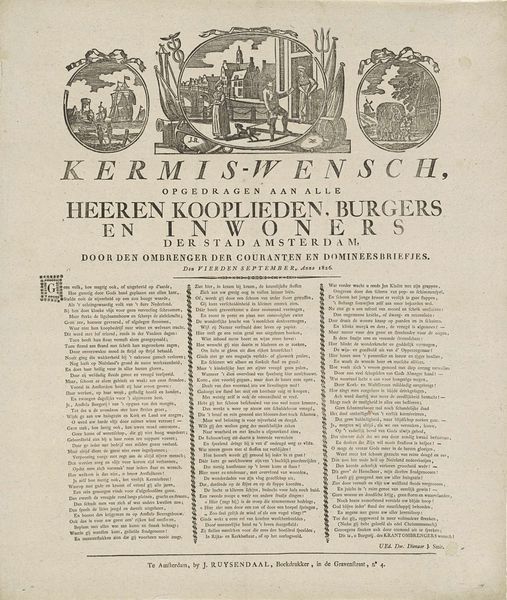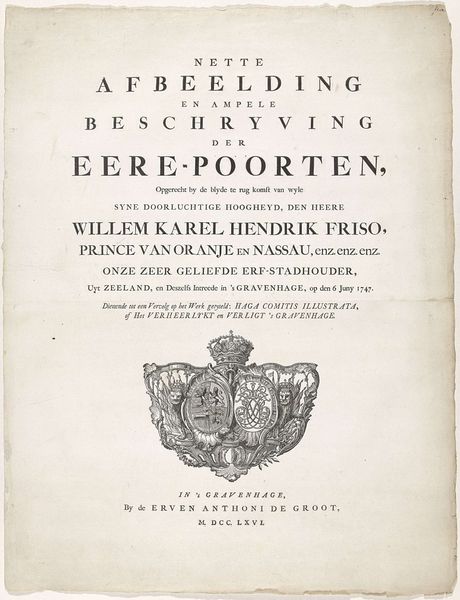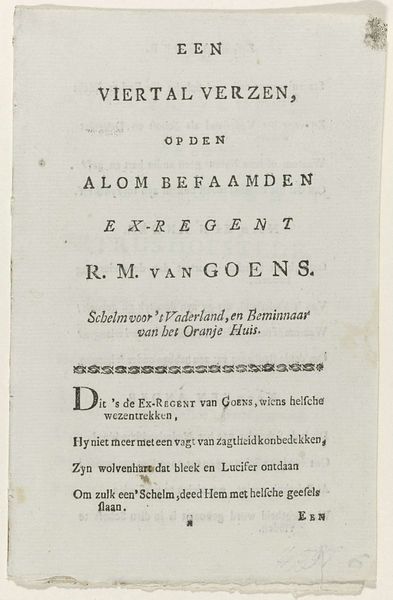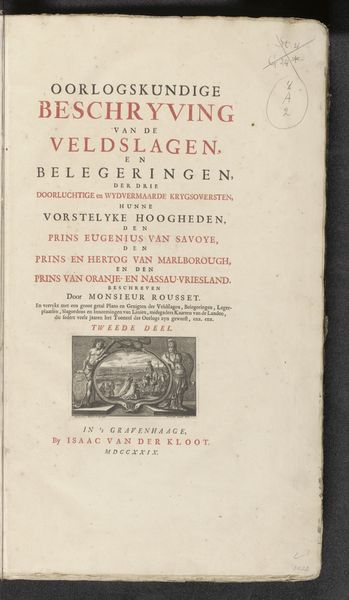
Tekstblad bij de prent van de gouden beker van de Haagse schutterij, 1753 1753
0:00
0:00
print, engraving
#
baroque
# print
#
text
#
engraving
Dimensions: height 420 mm, width 275 mm
Copyright: Rijks Museum: Open Domain
Curator: This text, “Tekstblad bij de prent van de gouden beker van de Haagse schutterij, 1753,” was created by Anthoni de Groot en Zoonen in 1753. It's currently held at the Rijksmuseum. The medium is described as a print using engraving techniques. Editor: It’s a dense block of text. My initial reaction is… overwhelming. I am struggling to find anything of immediate visual interest. Curator: It serves as a historical document tied to a specific event and artifact, the golden goblet, that represents the civic identity of the Hague's shooting company, its Schutterij, and how the Princes of Orange supported them. Editor: Right, I suppose for contemporary audiences this would have functioned almost like an official program for some grand spectacle, justifying the political significance of a gilded object and mapping out the important social hierarchy. Curator: Absolutely. Consider the baroque flourishes evident even in typography of the title: this emphasizes the importance of those being recognized – from the local council to the Prince of Orange, creating a clear structure for social cohesion. The text actually documents an event: a procession, celebration, involving the presentation of the goblet. It reflects the sociopolitical relationships within the Hague and its relationship to the ruling House of Orange. Editor: As a formal object, its lines are clearly delineated by the engraver, very carefully laid out but I think contemporary design standards are not fully respected in this, the column widths are not regular or particularly beautiful. I understand the intent of detailed record-keeping and capturing this social stratification. Curator: Its value today really lies in offering glimpses into the interplay between social ritual and public spectacle. It represents power at the local level in The Hague in that era. Editor: Indeed, examining these detailed accounts we see much more about what life was like, than gazing at only that goblet! Curator: Precisely. Texts like this offer critical insight into the societal frameworks shaping art creation during that period. Editor: Well, I come away with a newfound appreciation for it, a greater knowledge of its past context, and what that reveals about 18th-century Dutch culture.
Comments
No comments
Be the first to comment and join the conversation on the ultimate creative platform.
